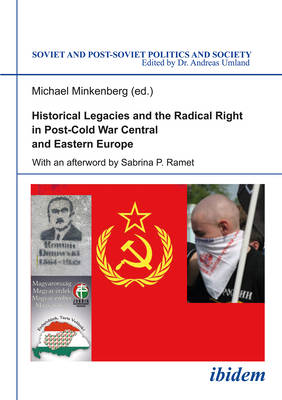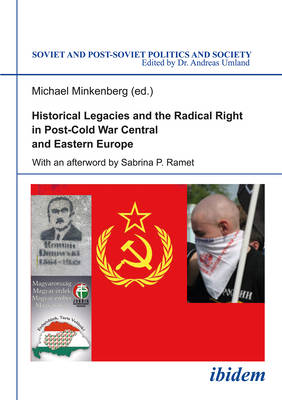
- Afhalen na 1 uur in een winkel met voorraad
- Gratis thuislevering in België vanaf € 30
- Ruim aanbod met 7 miljoen producten
- Afhalen na 1 uur in een winkel met voorraad
- Gratis thuislevering in België vanaf € 30
- Ruim aanbod met 7 miljoen producten
Zoeken
Historical Legacies and the Radical Right in Post-Cold War Central and Eastern Europe
With an afterword by Sabrina P. Ramet
Michael Minkenberg, Sabrina P. Ramet
€ 36,95
+ 73 punten
Omschrijving
The transformation process in Central and Eastern Europe (CEE) after 1989 is often clothed in terms of historical and geographical categories, either as a 'return of history' or as a 'return to Europe', or both. Either way, the radical right in CEE claims a prominent place in this politics of return. Studies of the radical right echo the more general concern, in analyses of the region, with historical analogies and the role of legacies. Sometimes parallels are discovered between the post-1989 radical right and interwar fascism. They imply a 'Weimarization' of the transformation countries and the return of the pre-socialist, ultranationalist, or even fascist past--the 'return of history'. Another interpretation argues that since some CEE party systems increasingly resemble their West European counterparts, so does the radical right, at least where it is electorally successful - the 'return to Europe'. A third line of thought states that the radical right in the region is a phenomenon sui generis, inherently shaped by the historical forces of state socialism and the transformation process. As a result, and in contrast to Western Europe, it is ideologically more extreme and anti-democratic while organizationally more a movement than a party phenomenon. This book provides insight into the role of historical forces in the shaping and performance of the current radical right in CEE. It conceptualizes 'legacies' both as a contextual factor, i.e. as part of structural and cultural opportunities for new movements and parties in the region, and as textual factors, i.e. as part of the ideological baggage of the past which is revived--and reinterpreted--by the radical right. An introductory essay by Michael Minkenberg puts the topic and the concept of legacies into a larger research perspective. Articles by Lenka Bustikova and Herbert Kitschelt as well as John Ishiyama employ the role of legacies as context, whereas the contributions by Timm Beichelt, Sarah de Lange and Simona Guerra as well as James Frusetta and Anca Glont treat legacies as text.
Specificaties
Betrokkenen
- Auteur(s):
- Uitgeverij:
Inhoud
- Aantal bladzijden:
- 208
- Taal:
- Engels
- Reeks:
- Reeksnummer:
- nr. 100
Eigenschappen
- Productcode (EAN):
- 9783838201245
- Verschijningsdatum:
- 1/08/2010
- Uitvoering:
- Paperback
- Formaat:
- Trade paperback (VS)
- Afmetingen:
- 148 mm x 210 mm
- Gewicht:
- 254 g

Alleen bij Standaard Boekhandel
+ 73 punten op je klantenkaart van Standaard Boekhandel
Beoordelingen
We publiceren alleen reviews die voldoen aan de voorwaarden voor reviews. Bekijk onze voorwaarden voor reviews.











